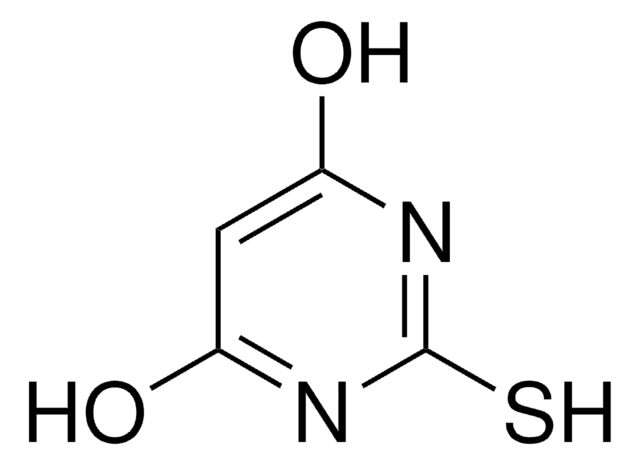P2880
Propionylthiocholine iodide
≥98%
Synonym(s):
(2-Mercaptoethyl)trimethylammonium iodide propionate
Sign Into View Organizational & Contract Pricing
All Photos(1)
About This Item
Linear Formula:
C8H18NOSI
CAS Number:
Molecular Weight:
303.20
EC Number:
MDL number:
UNSPSC Code:
12352100
PubChem Substance ID:
NACRES:
NA.22
form:
powder
Assay:
≥98%
Recommended Products
Quality Level
Assay
≥98%
form
powder
mp
200-202 °C (lit.)
storage temp.
−20°C
SMILES string
[I-].CCC(=O)SCC[N+](C)(C)C
InChI
1S/C8H18NOS.HI/c1-5-8(10)11-7-6-9(2,3)4;/h5-7H2,1-4H3;1H/q+1;/p-1
InChI key
BJQIXLJDWWVGAE-UHFFFAOYSA-M
Looking for similar products? Visit Product Comparison Guide
Signal Word
Danger
Hazard Statements
Precautionary Statements
Hazard Classifications
Eye Dam. 1 - Skin Irrit. 2 - STOT SE 3
Target Organs
Respiratory system
Storage Class Code
11 - Combustible Solids
WGK
WGK 3
Personal Protective Equipment
dust mask type N95 (US), Eyeshields, Gloves
Choose from one of the most recent versions:
Already Own This Product?
Find documentation for the products that you have recently purchased in the Document Library.
R N Guedes et al.
Comparative biochemistry and physiology. Part C, Pharmacology, toxicology & endocrinology, 119(2), 205-210 (1998-07-21)
Acetylcholinesterase (AChE, EC 3.1.1.7) purified from the lesser grain borer (Rhyzopertha dominica) was significantly inhibited by higher concentrations of the substrates acetylthiocholine (ATC), acetyl-(beta-methyl) thiocholine (A beta MTC) and propionylthiocholine (PTC). 2. The efficiency of AChE for hydrolyzing different substrates
Andrea Mosca et al.
Clinical chemistry and laboratory medicine, 41(3), 317-322 (2003-04-23)
No comparative information is available concerning the ability of various cholinesterase (ChE) methods to identify succinyldicholine-sensitive patients, purely on the basis of the enzyme activity recorded in serum. Here, we evaluated six different methods for the measurement of ChE activity;
Andreea Ticu Boeck et al.
Biochemical pharmacology, 63(12), 2101-2110 (2002-07-12)
The rat is the model animal for toxicity studies. Butyrylcholinesterase (BChE), being sensitive to inhibition by some organophosphorus and carbamate pesticides, is a biomarker of toxic exposure. The goal of this work was to characterize the purified rat BChE enzyme.
J Trancard et al.
Brain research, 476(2), 213-219 (1989-01-09)
The cholinesterase equipment of cerebral microvessels was studied in some rodents and carnivores using the Koelle-Friedenwald histochemical method with 3 artificial substrates and specific inhibitors for butyrylcholinesterase or acetylcholinesterase. Our observations reveal a great heterogeneity in cholinesterase types and their
S Faye et al.
Clinical chemistry, 32(8), 1477-1480 (1986-08-01)
We have developed a succinyldicholine-based assay for serum cholinesterase (EC 3.1.1.8) to help establish whether patients with suspected sensitivity to drugs of this type have enzyme abnormalities that cannot be detected by conventional laboratory techniques. Although the method discriminates between
Our team of scientists has experience in all areas of research including Life Science, Material Science, Chemical Synthesis, Chromatography, Analytical and many others.
Contact Technical Service








